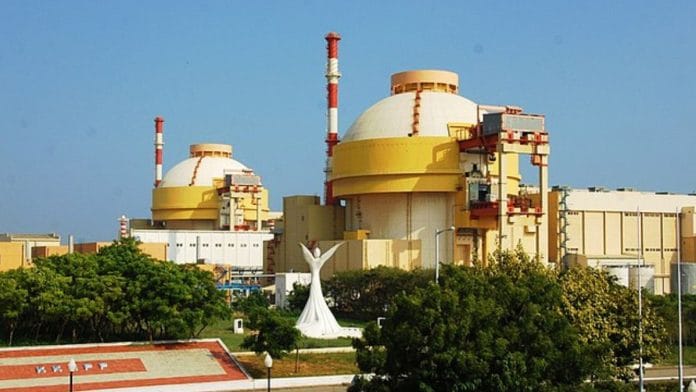Three individuals were arrested in Bihar for the possession of a restricted nuclear material, californium, on 10 August. This was based on a tip-off from the local police. While arrests were made and the Bhabha Atomic Research Centre determined these samples were not radioactive, the incident underscores the pressing need to discuss nuclear security as a function of responding to threats in India.
India’s threat perceptions are conditioned by its decades-long experience with terrorism, which has almost entirely originated in Pakistan. The fact that anti-India terrorist organisations such as Lashkar-e-Taiba (LeT), Jaish-e-Mohammed (JeM), and Hizbul Mujahideen have been nurtured by Pakistani security establishment has remained a sore point in India-Pakistan ties.
China, an all-weather ally of Pakistan, has only accentuated the complexities. It has repeatedly prevented the United Nations from taking action against terrorists based in Pakistan. The current political, economic, and social instability in our neighbouring country is an added concern, especially in the context of nuclear material safety.
Threats to India emanate not just from Pakistan but from China as well—at least historically. This can be seen in China’s involvement with insurgent groups in Northeast India, specifically the National Socialist Council of Nagaland (Isak-Muivah) or NSCN-IM. Beijing has allegedly sheltered and supported insurgent leaders including Hangshi Tanghkul, NSCM-IM’s arms procurer.
Despite ongoing peace talks, the region’s separatist movements remain unresolved, with localised violence expected to continue, particularly in Manipur and Assam. Additionally, India has concerns about Left-wing extremist groups and their propensity for violence. Although they have not yet expressed any interest in nuclear weapons, their possible collusion with other anti-India terrorist groups who may harbour nuclear inclinations cannot be ruled out.
The number of terrorist incidents has gone down since India’s surgical strike following the 2019 Pulwama incident, which is a positive shift compared to a decade ago, when such attacks were commonplace. However, this calm is all the more reason to keep our guard up. The recent violence in Jammu and the October 2023 Hamas attack prove that unlikely threats can become real without warning.
India should be particularly wary of such threats playing out in the context of nuclear and radiological materials.
India’s nuclear security regime
India has a well-established nuclear security regime, which includes a comprehensive legal architecture centred around the Atomic Energy Act 1962 and independent institutions that have ensured the security of its nuclear installations. It has been reviewing and updating its nuclear policy and regulatory measures, with various amendments that account for contemporary challenges.
Institutions like the National Investigation Agency (NIA), which was established in 2008, are critical in investigating cases related to terrorism and nuclear threats. Additionally, India’s online nuclear licensing process, e-Licensing of Radiation Applications (eLORA), stipulates a comprehensive review of the security and emergency plans at radiation facilities. The process ensures that these facilities are equipped with measures to prevent unauthorised access, theft, or loss of radioactive materials.
The eLORA has proven reasonably successful in ensuring safe transport and monitoring of radioactive materials, with built-in provisions for real-time reporting of any loss or theft that help mitigate security breaches immediately.
But nuclear security requires constant vigilance and adaptation, especially regarding the transport of nuclear and radioactive materials. In 2023, there were 168 illegal incidents involving such materials globally. India must improve technology to detect even small amounts of radioactive substances to eliminate such risks.
The tip-off by local police in the Bihar californium trafficking case highlights that communication between departments is crucial. Strict databasing and tracking of nuclear material is also required to ensure it cannot be illegally moved.
And nuclear security is not isolated from coastal security. Terrorists are perfectly capable of using small boats or drones to target coastal installations. The 2008 Mumbai attacks should be a reminder of how vital coastal security is for India.
Also read: Pakistan’s battle with bandits shows why it is losing all wars within
Cybersecurity measures
Nuclear security must consider threats emerging through new-age technologies. In 2019, a cyberattack on India’s largest nuclear reactor in Kudankulam showed continued vulnerabilities, highlighting the need for stronger cybersecurity measures.
The event of an outright attack on a nuclear facility is low due to the safety measures in place at nuclear power plants. However, attackers could employ advanced persistent threats to establish a long-term presence within the systems that were targeted, conducting surveillance and extracting data over extended periods.
Phishing, social engineering, and exploiting software vulnerabilities are common tactics used by non-state actors to gain initial access. Once inside, attackers can deploy malware designed to disrupt industrial control systems (ICS) or supervisory control and data acquisition (SCADA) systems that manage nuclear operations.
Cyberattacks can also add another dimension to insider threats by providing avenues for blackmailing or radicalising employees in nuclear installations.
India’s nuclear security regime, based on a risk-informed approach, has been quite effective in minimising risks to a manageable level. This approach is based on recommendations by the International Atomic Energy Agency (IAEA). It includes physical protection (monitoring and securing nuclear materials), detection (identifying materials out of regulatory purview), and emergency response (regaining control in case a nuclear material poses a threat to the public).
Essentially, India has taken a multi-pronged approach consisting of strong legal measures, intelligence cooperation across atomic energy and security agencies, as well as robust counterterrorism measures to ensure that terrorists and other non-state actors do not gain access to nuclear and radiological materials. One area that it needs to focus on, however, is transparency and international policy outreach, which can be particularly useful in the context of its efforts to integrate with the global nuclear non-proliferation architecture.
Rajeswari Pillai Rajagopalan is Resident Senior Fellow, Australian Strategic Policy Institute, Australia and former Director, Centre for Security, Strategy & Technology (CSST), Observer Research Foundation (ORF); Sameer Patil is Director, CSST, ORF; Shravishtha Ajaykumar is Associate Fellow, CSST, ORF; and Prateek Tripathi is Research Assistant, CSST, ORF. Views are personal.
(Edited by Prasanna Bachchhav)






